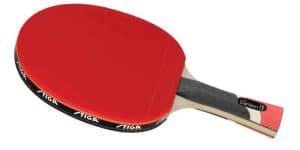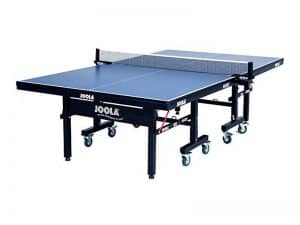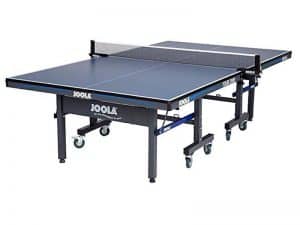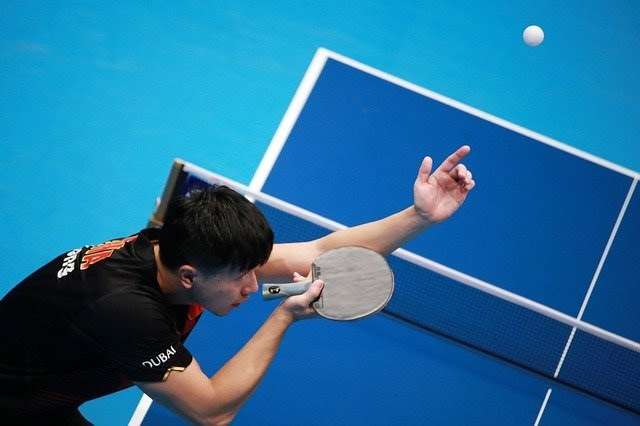Pickleball Brackets: Easily Set Up Your Own Tournament
- Alex Horscroft
- Last updated
Ever wanted to set up your own pickleball tournament? Well, what’s stopping you? Sure, it can be a lot of work, but with the right planning, it can go off without a hitch.
Pickleball brackets are the easiest way to organize tournaments. Simply choose whether you want a single-elimination or double-elimination format and then split participants by age and skill level as you see fit.
Creating these brackets by yourself can be rather tedious and time-consuming, so in this post, we will provide free downloadable templates for you to use. We’ll also explain everything you need to know about how you should set your brackets up.
Table of Contents
Pickleball Brackets for Tournaments
Blind Draw Single-Elimination

The first bracket is for a blind draw-style event with a single-elimination format. Losers for this event go into a loser’s bracket, so you will need to print off a second smaller bracket to track these matches.
To print this bracket, download the PDF. Alternatively, if you need a different number of players, you can find alternative PDFs here.
Seeded Single-Elimination

This bracket is the same as the first, except that each player is arranged by their seed. As you can see, the top players ranked 1 through 6 bypass the first round.
You can use player ratings to designate seeds or determine seeds through a round-robin event. This would constitute a non-pool-style tournament.
To print this bracket, download the PDF. Alternatively, if you need a different number of players, you can find alternative PDFs here.
Blind Draw Double-Elimination

Unlike the single-elimination sheets, you don’t need to print off a second sheet for the double-elimination sheets, as the loser’s bracket is included. The loser’s bracket allows players to still compete to win the event even after a loss.
This sheet is for unseeded events where players are randomly placed in the bracket.
To print this bracket, download the PDF. Alternatively, if you need a different number of players, you can find alternative PDFs here.
Seeded Double-Elimination

Finally, we have the seeded double-elimination bracket. Try not to get confused by all of the numbers for this tournament ladder. The non-bracketed numbers represent the seeds.
To print this bracket, download the PDF. Alternatively, if you need a different number of players, you can find alternative PDFs here.
Round-Robin Bracket

The final type of bracket you might want to use is a round-robin. This is for tournaments where you would want each player/team to face off against all the other competitors.
To print this bracket, download the PDF. Alternatively, if you need a different number of players, you can find alternative PDFs here.
Read More: Best Pickleball Sets
How Pickleball Tournaments Work

Before printing specific pickleball brackets, you must first understand how pickleball tournaments work. According to the official rules, there are seven event categories. These include:
- Men’s singles
- Men’s doubles
- Women’s singles
- Women’s doubles
- Mixed doubles
- Wheelchair singles
- Wheelchair doubles
However, it is often not as simple as just choosing one of these categories, as most tournaments will further split these events up in the interest of fairness.
Grouping by Age
Older players tend to be slower and less athletic. Therefore, they are at a major disadvantage when matched up against players in their prime.
If you’re setting your own tournament, you might only be able to have a few age categories due to limited participants. However, knowing common age restrictions to align your events with other competitions is good. The US Open Pickleball Championships uses the following age categories:
- 19+
- 35+
- 50+
- 60+
- 65+
- 70+
- 75+
- 80+
Skill level
In addition to age, most competitions will also place skill ratings on certain events to prevent unfair matchups.
The skill ratings consist of 1.0-2.0, 2.5, 3.0, 3.5, 4.0, 4.5, 5.0, and 5.5+.
Again, if you have limited number of people entering your tournament, you may only be able to include a few different skill categories.
So how do you know the skill level of your competitors? Good question.
The best way is through the USA Pickleball rating system known as Tournament Player Ratings (UTPR). However, players will only have a rating if they have competed in a USA Pickleball-sanctioned competition before. The reality is that many of your participants will not have done this.
Therefore, if you still want to have skill categories, the next best option is to use USA Pickleball’s skill rating sheets. These can give you a rough idea of the skill level of each player. Of course, they are subjective, but we still think they are a great tool to host a fair tournament.
Read More: Pickleball Rules
Pickleball Tournament Formats

With all the various categories out of the way, it’s time to discuss your options for formatting your tournament. You have a choice of five options which are as follows
- Single-elimination with consolation
- Double-elimination
- Round-robin
- Pool play
- Non-pool play
Single-Elimination With Consolation
For this type of tournament, all players begin in the winner’s bracket and proceed to the next round if they win their match. However, if they lose, they go down to the loser’s bracket.
The final two players/teams in the winner’s bracket compete for 1st and 2nd place, and the best that any players/teams in the loser’s bracket can achieve is 3rd place. When teams lose in the loser’s bracket, they are eliminated.
Double-Elimination
Double-elimination tournaments are similar to single-elimination tournaments. The winner’s and loser’s brackets work the same way until the end of the tournament. Unlike in the single-elimination format, though, the winner of the loser’s bracket plays against the winner of the winner’s bracket.
If the winner’s bracket player/team wins the match, they win the tournament. However, if the winner of the loser’s bracket emerges victorious, they reset the bracket. The two players/teams then play a final tie-breaker match to 15 points to decide the winner.
If you’re organizing a tournament and in need of additional templates, take a look at these free tournament bracket templates.
Round-Robin
In the round-robin format, each player/team plays all other competitors. The winner is the player/team that wins the most.
If two teams have the same number of wins, you decide the winner by whoever won in their head-to-head match.
Pool Play
Separate players/teams into a series of pools and have each complete a round-robin. The winner of each pool progresses and continues in either a single-elimination or double-elimination bracket to decide the placings.
Non-Pool Play
Play begins with a round-robin to obtain seedings for either a single-elimination or double-elimination bracket.
Closing Thoughts
While pickleball brackets can seem a little intimidating at first, they are easy to set up once you know what you are doing.
First, decide the type of event you want, such as singles, doubles, and mixed doubles. Following this, detail any conditions to entry, such as age and skill, then it’s merely a matter of printing off the appropriate pickleball bracket template, and you’re good to go!
Not so hard, is it?
Frequently Asked Questions
Similar Reads
Freelance writer. Table tennis enthusiast. Lover of all things online. When I’m not working on my loop game I’m probably binge-watching some fantasy show.
-
Alex Horscrofthttps://pingpongruler.com/author/alex-horscroft/
-
Alex Horscrofthttps://pingpongruler.com/author/alex-horscroft/
-
Alex Horscrofthttps://pingpongruler.com/author/alex-horscroft/
-
Alex Horscrofthttps://pingpongruler.com/author/alex-horscroft/
Popular Products
Join our email list for exclusive reviews & the latest Ping Pong News
Sign up to our newsletter and stay up-to-date with the latest news in the ping pong world, and be the first to read our new product reviews. We promise, no spam


















